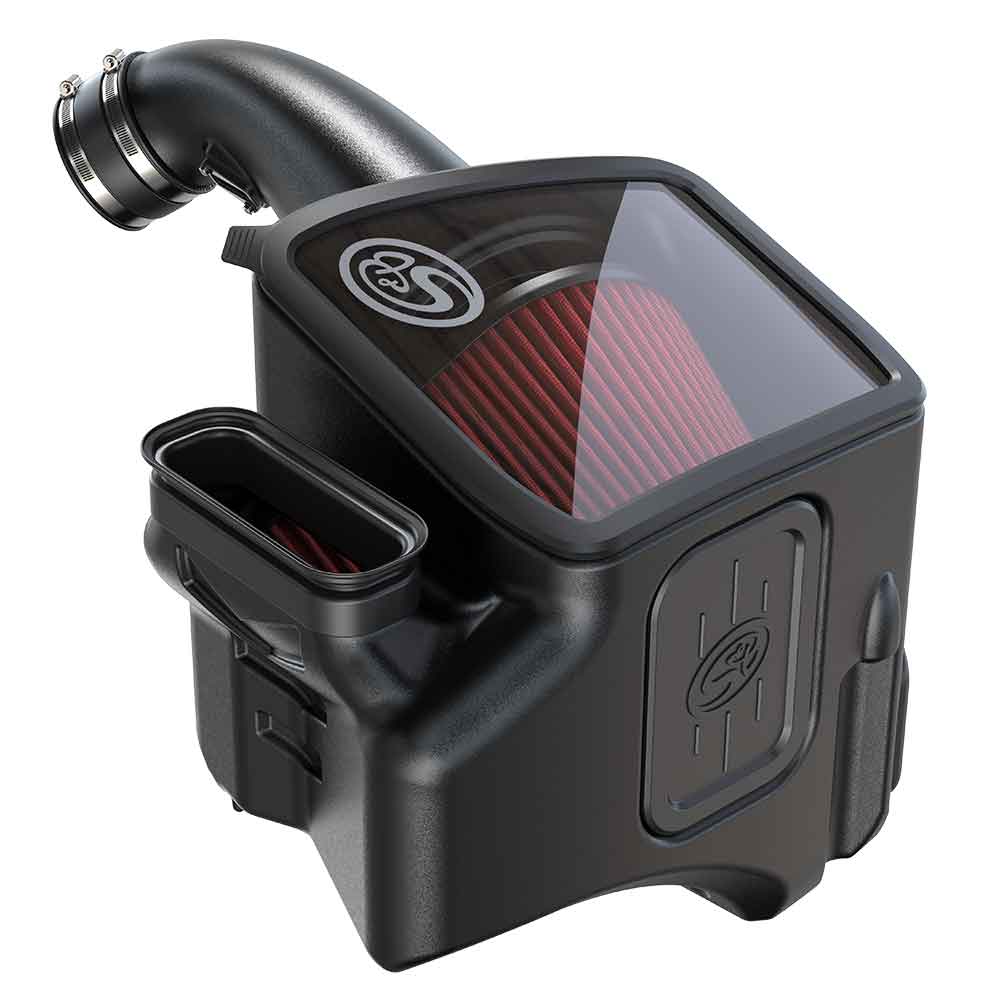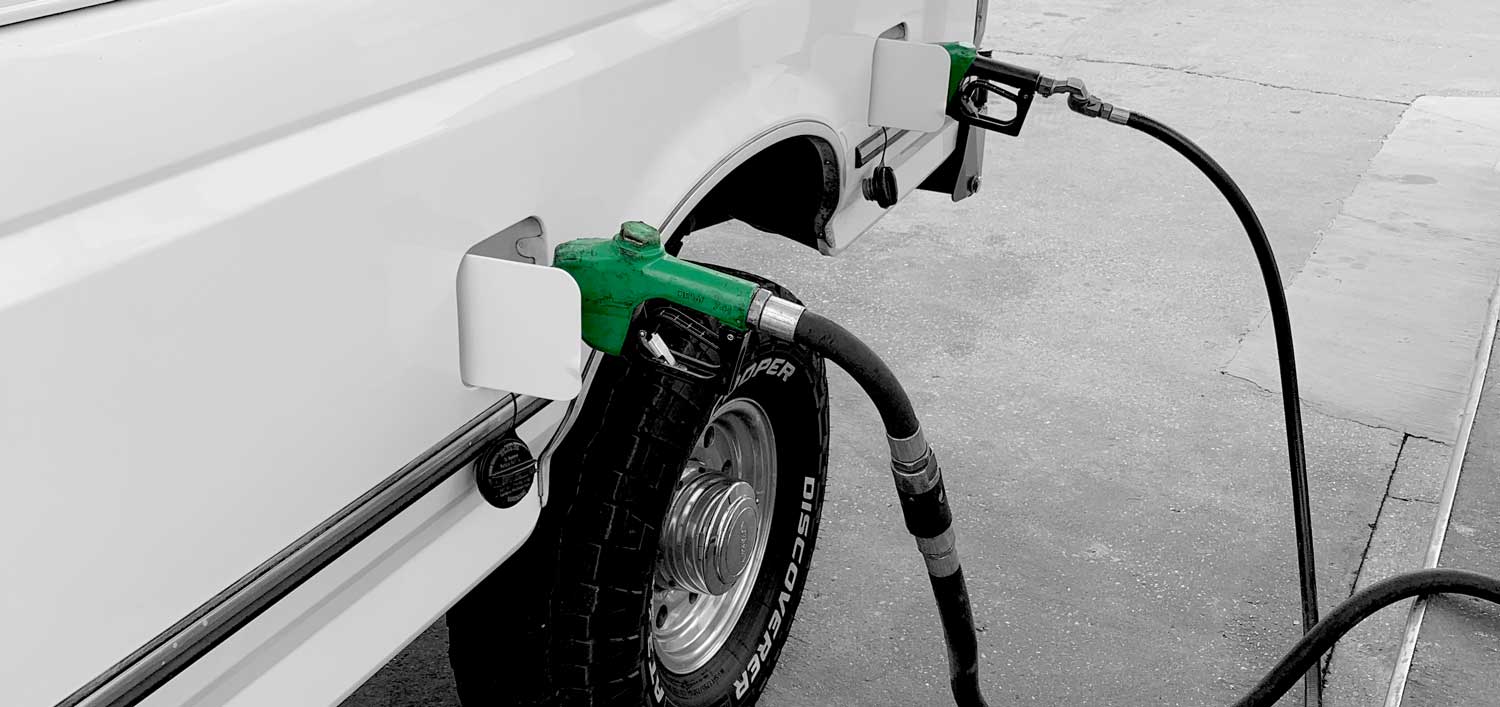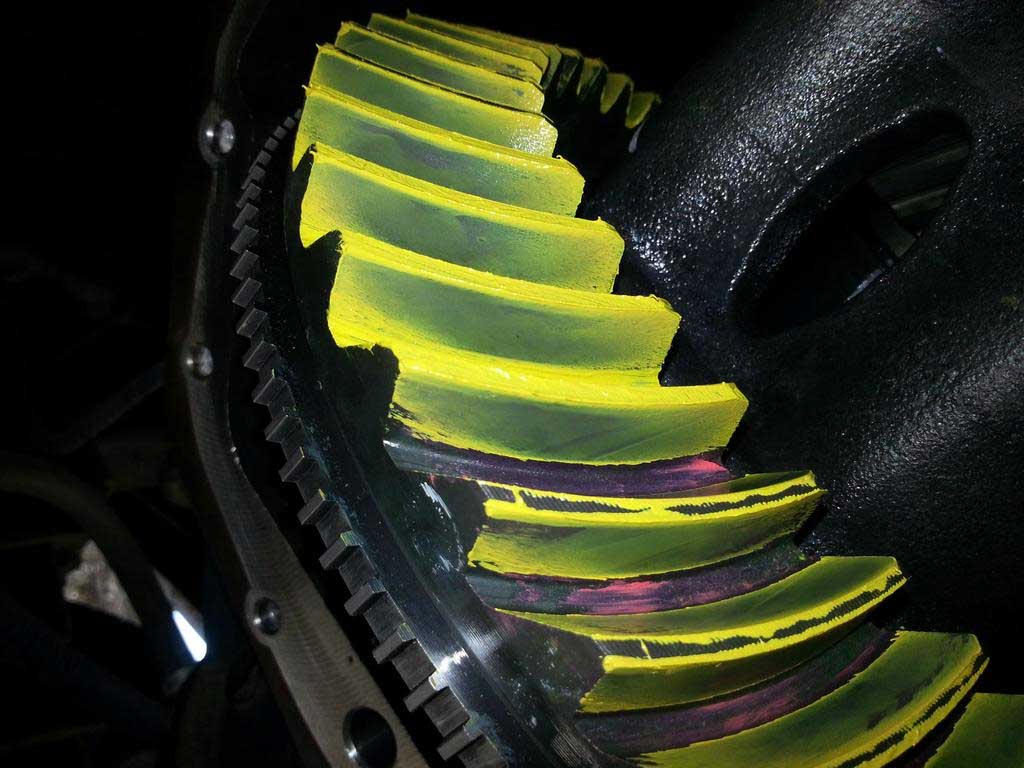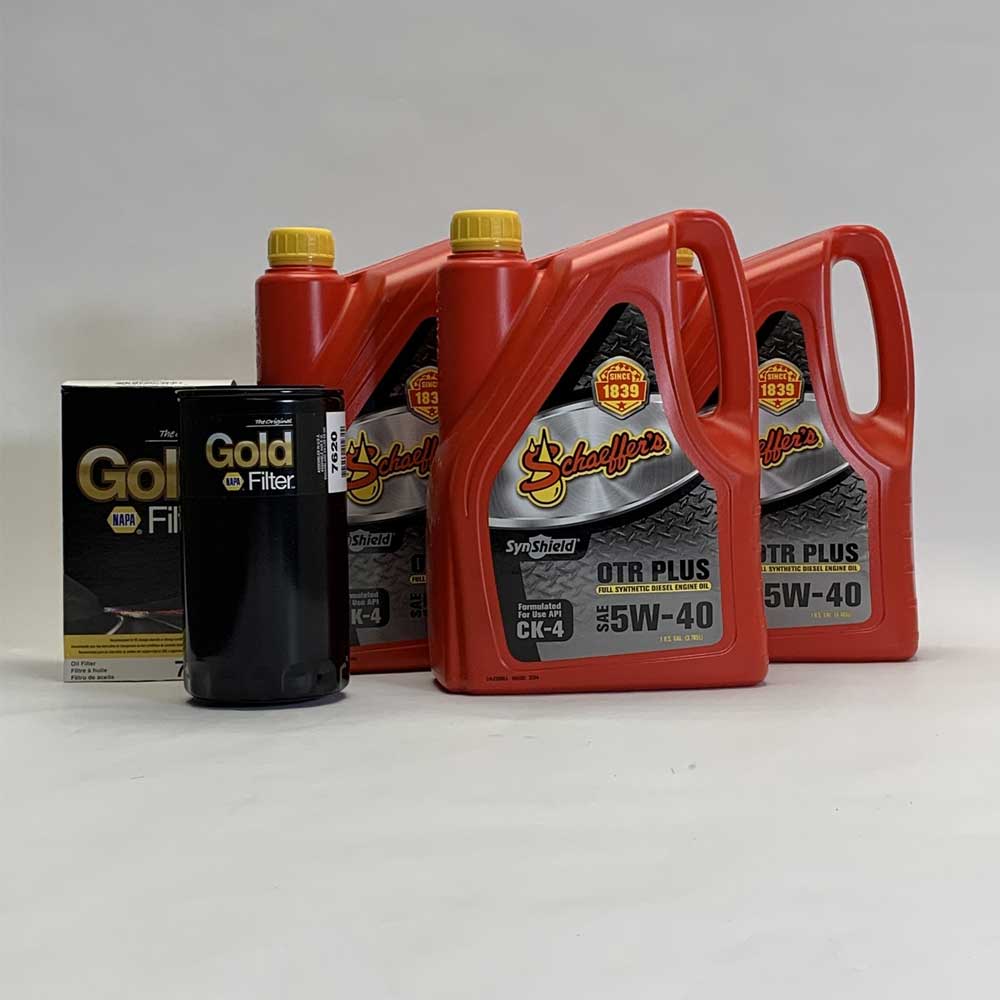2020 will go down as a year none of us want to remember, but one thing we all wish might’ve stayed around a little longer was the lower than usual fuel prices. The national average price for diesel dipped to a low of $2.40 per gallon last summer which meant fill ups were not so bad, although not as many drivers were hitting the roads to take advantage of the lower costs due to that pesky virus. Just as all good things come to an end, so did the low fuel prices, and early in 2021 the prices at the pump slowly started climbing further and further up. At the time of writing, the national average price of diesel fuel is $3.07/gallon according to the AAA, and some economists predict by the peak travel months later on this summer, that figure could get closer to $4.00/gallon, and states like California will be closer to $5.00. With the average fuel tank in a new diesel truck holding at least 30 gallons, we need to brace ourselves for fill-ups in the $120 to $150 range.
Because each drop of fuel is so precious, it only makes sense to get the most mileage out of each gallon of fuel we put into our tanks, so naturally we’re talking about ways to reduce the fuel consumption of your diesel-powered pickup. Fuel savings can come from some obvious areas like making sure you have the right amount of air in the tires or from installing a few simple modifications like a cold air intake, but fuel savings can also come from some not so obvious places in the chassis…
Watch Your Right Foot
In any discussion of efficiency, it has to be stated one of the biggest factors on fuel mileage for any vehicle has to do with your right foot. Driving habits like heavy acceleration and exceeding the speed limit waste a TON of fuel, plain and simple. I’m guilty of that driving style as much as the next guy, but you at least have to be aware of all the factors involved when chasing better mileage. The most fuel-efficient car in the world isn’t going to achieve its best mileage when you’re driving it like Ken Block. It takes more energy to accelerate quicker and maintain a higher overall speed, and fuel is energy. There are other habits that can waste fuel as well, like extended idling times and short trips where the engine doesn’t have time to fully warm up. Also, it’s worth mentioning a diesel engine is most efficient when its operating near its peak torque RPM, so for an L5P Duramax for example, if you can cruise at 1,600 RPM, chances are your mileage will be best at that range.
Tires Hurt Mileage?
Other than driving habits, the single biggest killer to fuel mileage on a truck can be the tires that you run, and I’ll give a first-hand example: My 2020 GMC Sierra AT4 HD is equipped with the L5P Duramax and 10-speed automatic, and in its bone stock trim it averaged 20mpg on my commute to work with an average speed of 65mph on a back country road with little to no stopping. For comparison, my “tuned” LMM could barely muster 19mpg on the same drive, and that was a lowered street truck with a cold air intake, lift pump, free flowing exhaust, and all the usual upgrades. I put the first 20,000 miles on the AT4 with the stock 275/65/20 Goodyear Trail Runner AT’s which measured in at 34.1” tall, so I had a ton of data to back up the mileage calculation. Like many of you, I decided I wanted the truck to look a little more aggressive, so I swapped the stock wheels and tires out for a set of 35×12.50×20 Nitto Ridge Grapplers which are a hybrid all/mud terrain tire. The tread is a lot more aggressive than the stock tires, (which translates into much more road noise) but even though they’re listed as a 35, according to Nitto’s website they actually measure in at 34.76” tall, which is only about 5/8” taller than stock. After a couple miles, I quickly realized my new tires caused a pretty significant drop in fuel mileage even though the overall diameter was nearly the same, and that was due to the extra weight of the wheel and tire package, the increased rolling resistance of the tread design, and the wider contact patch of the tread. (Side note, the OE Goodyears weigh 53lbs/tire, and the Ridge Grapplers tip the scales at 73lbs each, for a total increase of 80lbs of rotating mass not counting the wheels). Basically, it takes a lot more work to turn the Ridge Grapplers than the Trail Runners, and more work means more fuel burned. Even though my L5P was operating at the same RPM and road speed as before, the new tires cost me 1.75 miles per gallon. So, the takeaway here is if you do want to run an aftermarket tire and want decent fuel mileage, just be sure to pick one with a narrower width and an all-terrain tread like a Terra Grappler.
So, What Can You Do About It?
Just because some modifications can end up costing you mileage, that’s not to say the factory has it all figured out and you can’t get any more efficient than a stock truck, because there are a few mods you can do which will actually improve mileage.

There are three basic modifications which will help any car or truck gain a little power and efficiency, and those are a cold air intake, free flowing exhaust, and a tune/ECU calibration. An S&B cold air intake for example is inexpensive and very easy to install and will free up the restrictions found in the factory intake tract which means colder and denser air will be making its way into your engine and improve power and economy. The next two items are getting a little trickier to install on modern diesels because of the emissions equipment and locked down computers but will still free up some horsepower and efficiency. A filter back Monster Exhaust from Banks will help the engine exhale a little easier (more efficient airflow means more power and less fuel), and finally, we have tuning. Even while keeping the emission systems intact, you can see an increase in horsepower, reduction in DEF (Diesel Exhaust Fluid) usage, and a little better fuel mileage from simply tweaking the zeros and ones inside the ECM. Ram and Ford trucks can be easily tuned with an off-the-shelf flash programmer from companies like Edge, Smarty, or Banks. Duramax trucks made until 2016 can also be tuned pretty easily, but if you have a 2017 or newer L5P Duramax, your options are a Banks Derringer or Edge Pulsar inline tuning module, or you will need to swap out the ECU which can get a little costly, but the gains are definitely worth it in terms of added horsepower, torque, and efficiency.
Free Spin Kit
Both Ram and Ford heavy duty trucks use a solid front axle, and there’s no doubt it’s a beefy design that will stand the test of time, but there are a lot of heavy moving parts required to make a front axle strong enough for the amount of weight and torque found in a modern diesel truck. 4wd pickups made until the early 90’s used a manual locking hub to disconnect the power flow at the front hub, so when you were driving down the road, the front axle shafts, differential, and front driveshaft are not spinning. As robust as the design was, modern vehicle manufacturers thought it would be too much of a hassle for the driver to get out of the truck in the rain or mud and manually engage the locking hubs, so they wanted a solution that would keep a solid axle but allow for automatic operation of the four-wheel drive. There were a few changes over the last two decades, but Dodge/Ram in particular used a design that required a lot of extra fuel than it needed to. 1994 to 2002 trucks used a Central Axle Disconnect system which consists of a two-piece axle shaft on the passenger side with a shift collar that joined the two together, and a vacuum actuator engaged the collar whenever 4wd is requested. In 2003 Dodge eliminated the somewhat failure prone C.A.D. system for a stronger one-piece axle, but the major problem with that design is when you’re driving, the front axles, differential, and driveshaft are ALWAYS spinning even if you’re in 2wd going 100 mph. All those moving parts suck up more fuel and add extra wear and tear on your front-end parts. Oh, and did I mention the front axles used a non-serviceable unit bearing which is weaker than the old-school tapered roller bearing and spindle design?
If you have a 2003 to 2018 Dodge, you especially need to look into a Dynatrac Free Spin Hub Conversion kit, but the same benefits can be applied to any solid front axle equipped Ford, Dodge, or Ram truck. The first objective of a free spin kit is to disconnect the front drive wheel from the outer axle shaft by converting back to the older style manual locking hubs. This will stop the internal parts of the front axle from turning unnecessarily in 2wd, and that alone will save you some fuel, with reports of 0.5 to 1.0 MPG increases, but the benefits don’t stop there. You also gain the ability to use 2wd low range, which is useful when backing up a heavy trailer, you will drastically extend the life of your front differential components like u-joints and bearings, you get a much stronger wheel bearing design that’s much less expensive to service and lasts longer, and you can eliminate the high-speed vibration from the front driveshaft (that doesn’t need to be spinning in the first place).
Time for the disclaimer: if you evaluate a free spin hub conversion from an R.O.I. standpoint considering only the slight gain in fuel mileage, it’s gonna be hard to justify the cost (although as the price of fuel continues to rise, the R.O.I. does become shorter). You also need to consider how the other benefits will save your wallet, like less frequent unit bearing replacements, the saved expense of a tow truck when the unit bearing does fail, and the saved cost of a front differential and driveshaft rebuild, along with the added insurance of stronger locking hubs and outer axle shafts. Once you start looking at all the benefits, a free spin kit does make a little more financial sense.
The Proper Ratio:
Let’s circle back to our discussion of tires, but this time operate under the assumption you don’t want to drive around on stock sized rubber. Because you might be pulling a trailer through the fields or need to access a jobsite deep in the woods, the larger more aggressive tires are a necessity for traction and ground clearance. Due to the increased diameter of the tires, your truck will have a harder time accelerating empty or loaded, which means your engine has to work harder, and thus burn more fuel. To help give a little extra mechanical advantage to your engine and offset the larger tires, swapping your ring and pinion to a numerically higher ratio will create more leverage, which will help restore some fuel mileage and more importantly the towing power. Of course, you can overdo it with the ratio and hurt mileage, but as long as you scale the new gears proportionally with the increase in tire size over stock, your engine will still operate at a near stock RPM. Typically for a 37” tire a 4.10 or 4.30 ratio will be in the sweet spot, or if you’re running 39” or taller tires, a 4.56 might be necessary.
Make no mistake, changing gears in any truck is an expensive proposition, especially if you’ve got a 4wd IFS truck, so carefully consider if this is a change you need to make with your particular setup, but if you tow heavy trailers and run taller tires, it’s likely a must-do for you.
Proper Maintenance and Fluids
I’m constantly preaching the importance of scheduled maintenance, and engine oil changes are a routine part of truck ownership, but did you know that by selecting the proper engine oil for your truck you can also see a slight increase in fuel efficiency by as much as 4.5%? You’re surely heard of synthetic motor oil by now, but what’s the big deal? In a nutshell, conventional petroleum-based oils will break down over time which reduces their lubricating properties and can change the viscosity, which is part of the reason why you need to change your oil more often when using dinosaur oil. Synthetic oil is more stable throughout its lifespan which means no change in viscosity, can withstand higher temperatures, and it has a smaller molecule which can better lubricate the internal parts of the engine. In essence, synthetic is a slipperier oil, which means it will provide less resistance to moving parts, or in other words, it’s more efficient. So, next time your diesel is due for an oil change, rather than going down to Walmart and grabbing the same old jug of conventional Rotella you always do, check out our website and grab a premium Schaeffer’s Oil Change Kit for your truck, which comes with their full synthetic 5w40 oil and a filter of your choice. This will allow a longer drain interval than conventional oil, will protect your internal engine parts better, and since it’s 5w40 viscosity, it will allow better oil flow and lubrication on cold starts than a 15w-40 can but still has the same warm temperature protection of 40 weight oil. But what about the lubricants for the rest of your truck? The same benefits of improved protection, extended drain intervals, and reduced friction can be applied to your transmission, transfer case, and differentials simply by switching to a full synthetic oil and Schaeffer’s has you covered there as well with their 75w-90 gear oil and All-Trans Supreme ATF. Independent studies have suggested that switching every fluid in your drivetrain to full synthetic can save an additional 2.5 to 3.0% fuel over just synthetic engine oil.
Finally, there is one last fluid that can help increase your mileage a little further, and that’s the very fuel you put into your tank. Ultra-low sulfur diesel fuel found at the pump today varies widely in quality, but a fuel treatment like F-Bomb added to your tank at every fill up will increase the lubricity of your fuel (diesel is an oil after all) which helps prolong the life of your injection pump and injectors, but F-Bomb also increases the cetane rating of the fuel and will create a more complete combustion which means a slight bump in power and you guessed it, better fuel mileage.
Is It All Worth It?
If there’s one thing you take away from this discussion, it’s be realistic with your fuel mileage expectations. Diesel pickups weigh an average of 8,000 pounds when empty and have the aerodynamics of an elephant, so you’re never going to get 40mpg, but if you drive carefully and do a couple upgrades that will make your drivetrain operate more efficiently, you might be able to get a healthy bump in mileage from your baseline. Over the lifetime of the truck, those savings will add up, but more importantly, most of these changes will make the rest of the truck last a little longer as well, so the savings aren’t just found at the pump.





Running proper air pressure in tires can make a difference also